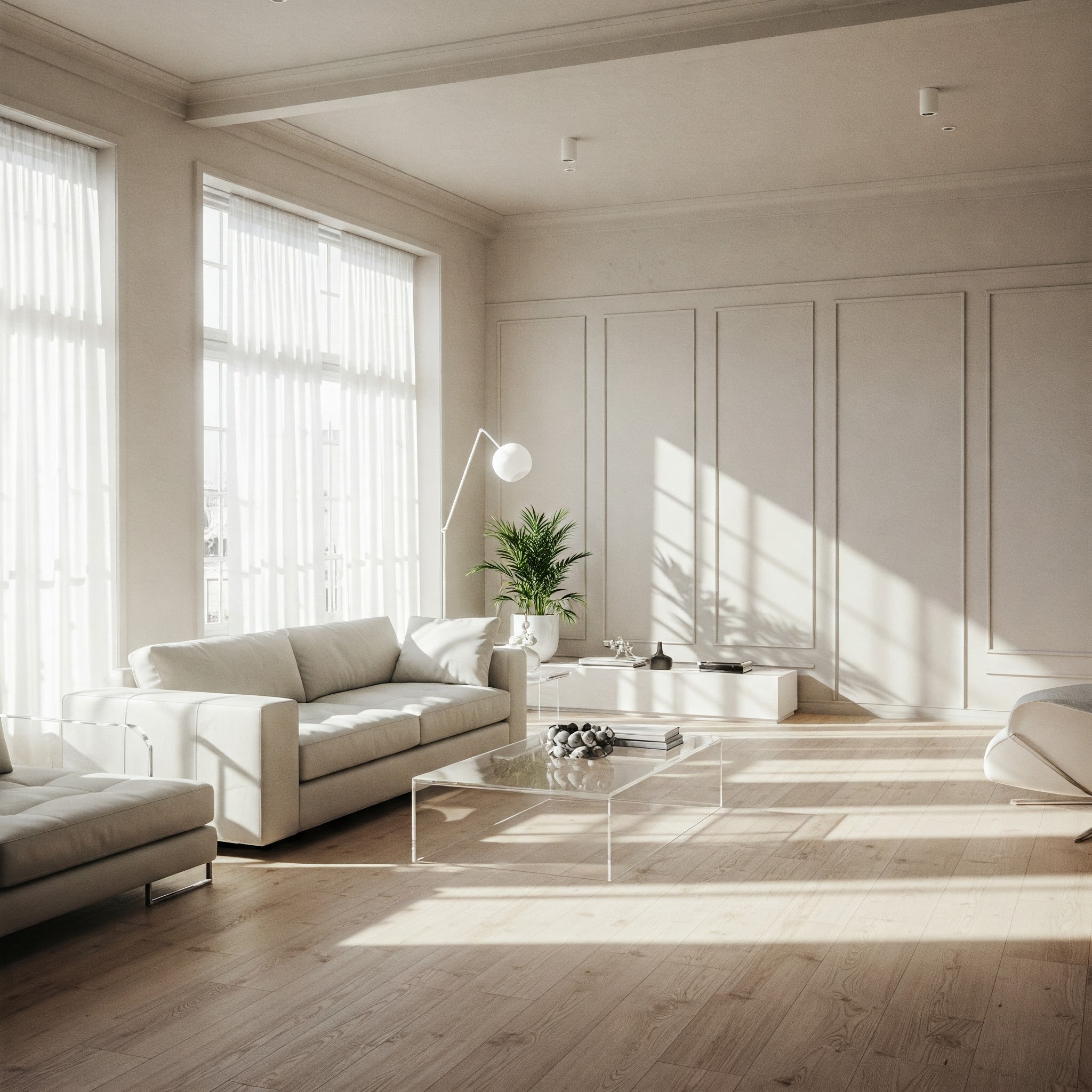The Magic of Lighting: How to Transform Spaces Through Right Lighting
Lighting is more than just a functional necessity—it's a design language. In architecture and interior design, the way we use both natural and artificial light can completely transform a home’s atmosphere, energy, and spatial experience.
The smartest designs always begin with light—whether it's how a window frames a sunbeam or how a pendant lamp defines a dining space.
1. Designing with Natural Light: Architecture That Breathes

Natural light is one of the most powerful tools in spatial design. It enhances materials, reduces energy use, and creates a direct connection with nature.
Strategic Window Placement
Orientation is key:
North-facing windows provide soft, even daylight.
East-facing brings cool morning light.
West-facing adds warmth during sunset.
South-facing (in India) needs shading but floods interiors with daylight.
Design tips:
Vertical windows make ceilings feel higher.
Horizontal strip windows stretch the space.
Corner and wraparound glazing offers panoramic openness.
Skylights & Clerestory Windows
Perfect for internal spaces like stairwells, kitchens, or hallways.
They draw daylight from above while maintaining wall space and privacy.
Glass as a Light Medium
Sliding glass doors or full-height glazing connect interiors with exteriors.
Glass partitions allow light to travel between rooms without obstruction.
Ribbed or frosted glass adds privacy while still inviting brightness.
2.Creating Flow and Openness Through Light

Natural light defines spatial quality:
Open-plan layouts allow light to travel farther.
Internal courtyards or light wells draw sun deep into a home.
Double-height spaces with large glazing enhance volume and grandeur.
The goal: make every part of the house feel airy, open, and alive—even if the footprint is small.
3. Interior Lighting: Sculpting Space After Sunset

Natural light fades, but interior lighting takes over to continue the story. A well-designed lighting plan supports both function and aesthetics.
The Three Layers of Light
Ambient lighting – general lighting like ceiling fixtures, recessed LEDs, or chandeliers. It gives overall illumination.
Task lighting – focused lighting for reading, cooking, or working (e.g., pendant lights over kitchen counters or study lamps).
Accent lighting – used to highlight artwork, architectural details, or textures (e.g., wall washers, spotlights, or under-cabinet lighting).
A room feels balanced when all three layers work together.
Smart Placement of Fixtures
Cove lighting softens corners and adds ambient glow to ceilings or furniture.
Wall sconces bring subtle light to corridors and bedrooms.
Track lighting allows flexibility in modern, minimalist spaces.
Pendant lights create focal points above dining areas or islands.
Recessed spotlights enhance clean ceilings and make the room feel taller.
4. Light and Material Interaction
Lighting only works well when surfaces respond beautifully to it.
Colors & Finishes
Light-colored walls reflect natural and artificial light better.
Glossy and satin finishes bounce light, making spaces appear larger.
Matte finishes absorb light, creating warmth and intimacy—ideal for bedrooms or lounge zones.
Textures and Shadows
Play with shadows: indirect lighting over textured surfaces (like brick or stone) adds depth and drama.
Use backlighting behind mirrors, beds, or shelves to give a “floating” effect.
5. Blending Natural and Artificial Light

The real magic happens when both types of lighting work together:
A living room with daylight filtering in through corner glazing during the day and recessed LEDs creating mood lighting at night.
A kitchen where task lights under cabinets complement skylights above.
A bathroom where a frosted window softens daylight while a warm backlit mirror takes over at night.
Good lighting transitions naturally from sunrise to sunset—responding to the rhythm of daily life.
6. Lighting for Wellness and Energy Efficiency
Daylight improves well-being: It boosts mood, productivity, and even helps regulate sleep.
LED technology reduces power consumption, with options for dimming and color temperature control.
Smart lighting systems automate brightness and tones based on time of day—bringing a dynamic, human-centric lighting approach to interiors.
Conclusion: Light is the True Design Element
Whether it's the early sunlight pouring in through clerestory windows or a soft pendant glow above your dining table, lighting is what makes a space come alive. When planned with intention—through both architectural elements and layered artificial lighting—your home doesn’t just look better. It feels better.
Design for light, and you design for life.
📞 Contact Us Today for a free consultation and let’s create your dream interior!
📍 Location: Muthiraparamb, Near Calicut University, Kerala
🌐 Website: quad.org.in
📩 Email: info@quad.org.in
📞 Phone: +91 9605080303



